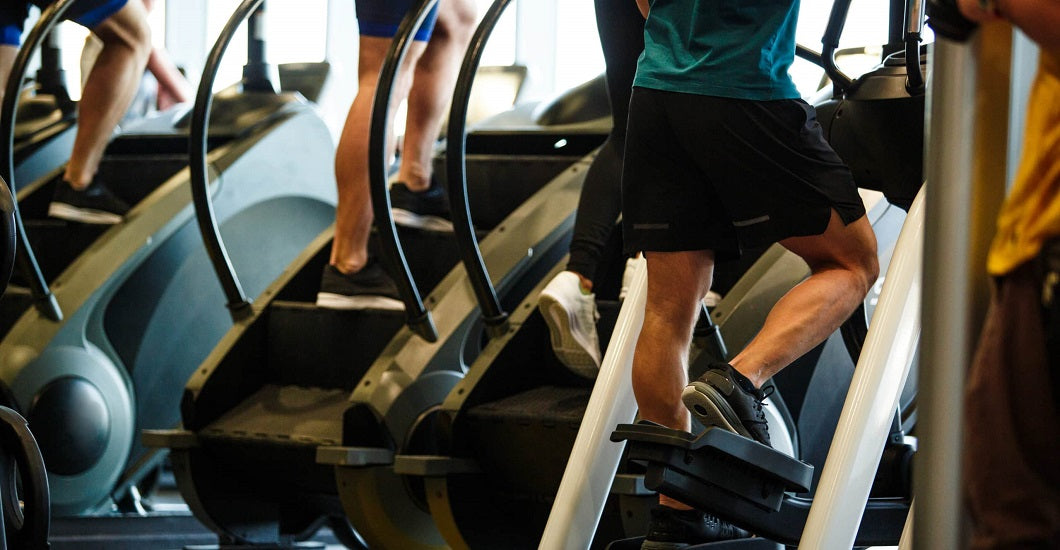Regarding running before or after eating, there are many ways to say. Some people think that running before eating will increase the rate of absorption of calories, offsetting the effect of weight loss. Some people think that exercise after running will make gastrointestinal indigestion. In fact, running before eating or running after eating is better? How long can you run after eating? DeerRun Treadmill will give you a detailed explanation.
How long to wait after eating to run?
How long can people run after eating? It depends on portion size and food.
It usually takes about 3 to 4 hours for the human gut to digest a meal, and this digestion time varies according to the following 2 points:
- How much you eat: The more you eat in a meal, the longer it takes for your stomach to digest the food.
- What you eat: The more fat, protein, and fiber in the food, the longer the digestion time. So if you eat fast food, salty and crispy chicken, or a lot of desserts, it may take 4-5 hours for the stomach to digest the food.
However, you do not need to wait until all the food has been digested before running, but at least the stomach should be allowed to complete the basic digestive work. The stomach needs about 1-2 hours to digest the food and will send the food to the small intestines and the large intestines to continue the subsequent digestive work after digestion.
The timing of after-meal exercise depends not only on the amount and type of food but also varies according to the type of exercise. If it is a simple exercise, such as walking or stretching, it will not affect the digestive function, and after-meal exercise can promote the utilization of blood glucose to achieve the effect of fat loss and slimming.
Below are the suggested exercise times after meals based on the amount and type of food and the type of exercise:
|
Exercise Time |
|||
|
type of food |
low-intensity exercise (slow walking and riding) |
moderate-intensity exercise (fast walking) |
high intensity exercise (fast running) |
|
a light meal or snack |
after eating |
30 minutes after eating |
30 minutes after eating |
|
dinner |
after eating |
30 minutes after eating |
1-2 hours after eating |
|
a lot of or high fat, fiber foods |
15-30 minutes after eating |
1 hour after eating |
2-3 hours after eating |
Is it bad to run after eating?
If you start running vigorously before your stomach has finished digesting, you may suffer from stomach indigestion and experience the following symptoms:
- Bloating and flatulence.
- Abdominal pain.
- Nausea, vomiting.
- Gastroesophageal reflux or burning sensation in the upper abdomen (commonly known as heartburn).
Why you feel discomfortable to run immediately after eating?
Running immediately after eating, especially a large or heavy meal, can potentially lead to discomfort and negative effects. Here's why:
Digestive Discomfort:
Running diverts blood flow from your digestive system to your muscles, which can interfere with the digestion process. This might result in cramping, bloating, nausea, and general discomfort.
Reduced Performance:
Running with a full stomach can make you feel sluggish and impact your performance. Your body is using energy to digest the food, which might leave you with less energy for your run.
Increased Risk of Acid Reflux:
Running after eating can increase the risk of acid reflux or heartburn, especially if you've consumed foods that are known to trigger these symptoms.
Hydration Concerns:
Running immediately after eating could lead to dehydration if you haven't properly hydrated before your run.
Blood Sugar Regulation:
For individuals with diabetes or those prone to blood sugar fluctuations, running after eating might impact blood sugar levels.

Should I run before or after eating?
Whether you should run before or after eating depends on your personal preferences, goals, and how your body responds to exercise and food. Here are some considerations for both options:
Running Before Eating:
Pros:
More Energy: Some people find that running on an empty stomach in the morning provides a sense of lightness and increased energy.
Fat Burning: Running in a fasted state may tap into stored fat for energy, potentially aiding in fat loss.
Less Digestive Discomfort: Running on an empty stomach can help avoid digestive discomfort during exercise.
Cons:
Lower Intensity: Running without fuel may limit your ability to perform high-intensity workouts.
Potential for Fatigue: Running on an empty stomach might lead to quicker fatigue, especially for longer runs.
Running After Eating:
Pros:
Sustained Energy: Eating before running provides a source of readily available energy, which can improve performance, especially for higher-intensity workouts.
Improved Endurance: Fueling before a run can help you maintain endurance and perform longer distances.
Reduced Risk of Fatigue: Eating before running can prevent early fatigue and help you push harder during your workout.
Cons:
Digestive Discomfort: Running immediately after eating can lead to cramping, bloating, or nausea.
Time Considerations: You need to wait a certain amount of time after eating to allow for digestion before running.
Ultimately, the decision to run before or after eating depends on your individual goals and comfort. Here are some tips to help you decide:
Morning Runs: If you prefer morning workouts, you might start with a light snack or drink and give it some time to digest before heading out for your run.
High-Intensity Workouts: For intense workouts or races, fueling before the run is generally recommended to ensure you have enough energy to perform at your best.
Longer Runs: If you're planning a long-distance run, eating before the run can help you sustain energy levels throughout.
Personal Comfort: Pay attention to how your body responds. Some people feel great running on an empty stomach, while others need some fuel to perform well.
Experiment: Try both options and see what works best for you. Everyone's body is different, so it's important to find what suits your needs.
Remember that hydration is crucial, regardless of whether you run before or after eating. Staying hydrated supports your overall performance and well-being.

How to have fun by running on a DeerRun Treadmill?
Feeling that running is boring is a common sentiment, and it's important to acknowledge that different people have varying preferences when it comes to physical activities. Try to use DeerRun Smart Treadmills to make running more engaging and enjoyable:
Change Your Route:
Running in the same location or route repeatedly can contribute to boredom. You can use DeerRun Treadmills to link to a fitness app - PitPat to explore new routes and courses to keep things fresh.
Listen to Music or Podcasts:
Creating a playlist of your favorite songs or listening to engaging podcasts can help pass the time and keep you entertained.
Run with a Friend:
Running with a friend or a running group online can make the experience more social and enjoyable.
Set Goals:
Setting goals for your runs, such as increasing your distance or improving your pace, can add a sense of purpose and accomplishment.
Use Apps and Tracking Devices:
Running apps - PitPat can provide you with real-time data, challenges, and rewards, making your runs more interactive.
Interval Training:
Incorporating intervals, where you alternate between faster and slower paces, can add variety to your run and keep you engaged.
Join Competitions:
Participate in a competition at PitPat to add excitement and a sense of accomplishment to your running routine.
Remember, the key is to find what works best for you. If running still feels monotonous, it's okay to explore other forms of exercise that align with your interests and keep you motivated. The most important thing is to stay active and enjoy the journey to a healthier lifestyle.

Conclusion
In conclusion, determining how long to wait after eating before running is a matter of finding the right balance between providing your body with enough energy and avoiding discomfort. While there are general guidelines to consider, such as waiting 30 minutes to an hour after a light snack or 1 to 3 hours after a larger meal, individual factors play a significant role in making this decision.
It's essential to listen to your body and pay attention to how it responds to exercise and food. Digestive comfort, energy levels, and personal preferences all influence whether running before or after eating is more suitable for you. For high-intensity workouts or longer runs, fueling before the run can enhance performance and endurance. On the other hand, running on an empty stomach may provide a sense of lightness and potentially tap into stored fat for energy.
Ultimately, the right approach will depend on your goals, your body's unique responses, and any underlying health considerations. Hydration is equally crucial, regardless of your chosen timing. Experiment with different strategies to discover what works best for you.







Leave a comment
All comments are moderated before being published.
This site is protected by hCaptcha and the hCaptcha Privacy Policy and Terms of Service apply.